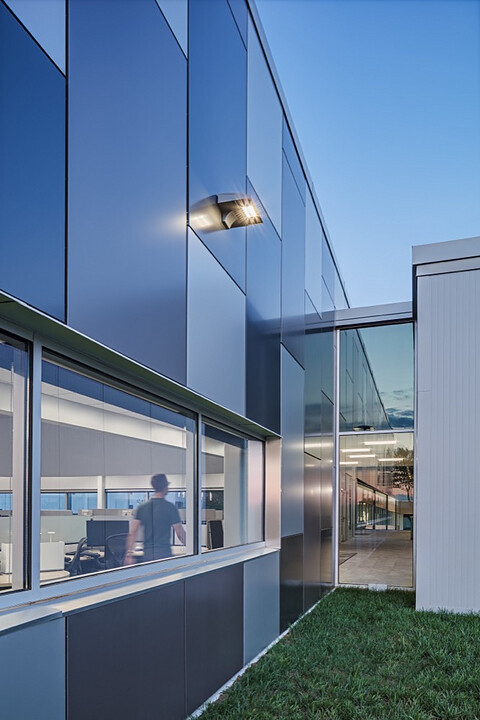
The way in which a fire evolves largely depends on the materials that constitute the building, as well as how it is designed. For this reason, there exist a number of fire safety requirements in building codes that must be followed during the initial design stages, as well as the physical construction of a building. In addition to these building codes, there are other considerations that must be taken into account such as thermal comfort, acoustics, and accessibility. When specifying a material or product for part of a building, the architect or design professional must pay close attention to meeting these demands. An example of a suitable material choice is the Insulated Metal Panel (IMP), which can have superior thermal properties, various appearance possibilities and good fire resistance.

In order to be clear about how each material will behave when interacting with fire, tests are conducted to a set of standards typically stipulated by local building codes. In these tests, data such as time, temperatures reached and the final conditions of each material are observed so that the designer can safely specify the product. Depending on the application, jurisdiction, building type and project specification, different fire tests and certifications to independent standards could be required. One of the most important ones for wall assemblies like IMPs in the United States is NFPA 285, which requires a pass result to demonstrate compliance.

When specifying a material and approving the construction of a building, it is not merely in relation to fire safety that guidelines must be met. With growing concerns about climate change and stricter regulations, requirements for thermal insulation and energy efficiency for all materials have increased. Balancing fire safety and reaching the established efficiency standards while also achieving the desired aesthetics within a reasonable budget often proves to be quite a challenge.


Building envelopes play a key role in this. The building envelope protects the building from the elements, contributes to thermal and acoustic comfort and impacts fire safety. The choice of a façade system has economic, sustainability, construction and longevity implications to be considered. In addition, there are several aesthetic factors that a building envelope needs to address: context, color, texture, visual comfort and general design intent, to name just a few. An example of a building envelope material that can help to meet these various needs are Insulated Metal Panels (IMPs); composite assemblies for walls or roofs that have exterior and interior steel linings and an insulating core. Available in a variety of thicknesses and panel profiles, they are an excellent alternative due to their superior thermal properties, easy installation, dry work, diverse design possibilities and good fire performance. In short, the product combines a thermally efficient core with insulated metal panels (internal and external), producing hermetic interfaces and optimized and fast constructions.

Insulated metal panels are available with high levels of thermal insulation (R values up to R-8.0 per inch with products like Kingspan QuadCore). The same closed cell insulation core technology that gives these panels their high insulation value also contributes to their fire performance. Through tests, it was found that Kingspan QuadCore panels exceeded the fire resistance standards in comparison with conventional polyiso panels found on the market. They were found to have low smoke generation, a higher ignition point and release far less heat.

For insulated metal panels, manufacturers must pass the NFPA 285 test on the most common wall configurations for which their products will be used. This test was developed to assess the spread of fire vertically and laterally for wall mounts that contain combustible components, such as foam plastic insulation, combustible exterior façade elements, and some air and water barrier materials. This test is important, because the components in question are not being evaluated in isolation, but rather tested as part of the actual wall mounting system that is being proposed, allowing for a much more accurate analysis of a real-life scenario. The "Not All Insulation is the Same… Fire Test Certification & Real Fire Case Studies" report details the tests and results achieved by this product. In addition, real occurrences of fires in structures with Kingspan products are analyzed, which proves the practical security of these systems.

Far beyond an aesthetic decision, the specification of products for the envelope of a building involves weighing the costs and needs of thermal and acoustic insulation. It is essential to consider products that combine energy efficiency with adequate safety for the building's occupants.
Learn more about Kingspan Insulated Metal Panels by clicking this link.


